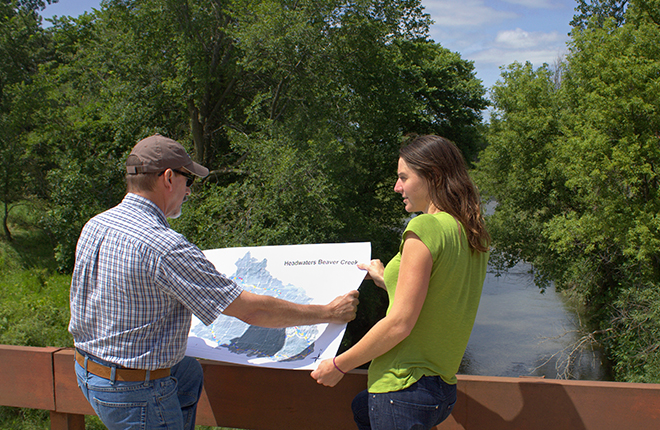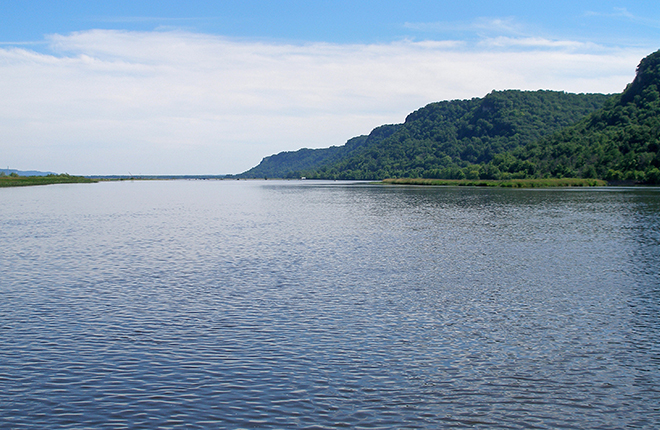Toolset Identifies Water-Conservation Options
Excess nutrients from watershed runoff, from sources that include farming, affect downstream water users and the ecological quality of aquatic environments. Now, a new software toolset developed by scientists with the Agricultural Research Service is geared to better manage the runoff of nutrients, such as nitrogen and phosphorus, while also supporting agricultural production.
A watershed is an area of land that can contribute water into a stream, river, or lake. Excess nutrients from watersheds can promote algal blooms in surface waters, and later the water’s oxygen may be consumed as bacteria feed on the algae. When oxygen depletion reaches levels where water no longer supports aquatic animals, the condition is called “hypoxia,” and it affects areas of the Gulf of Mexico, the Great Lakes, and the Chesapeake Bay. High concentrations of nitrates can also make water unfit for drinking.
The new computer-based toolset—geared to serve conservation planners, researchers, and landowners—is described in two papers that appeared in the May-June 2015 issue of the Journal of Environmental Quality. The research was organized and led by ARS soil scientist Mark D. Tomer and presented in these papers.
“The toolset provides an improved approach for understanding where conservation practices could be best applied among farmlands found in agricultural watersheds across much of the nation, particularly the Midwest,” says Tomer.
The free software toolset—called the “Agricultural Conservation Planning Framework” (ACPF)—operates within a geographic information system called “ArcGIS” that can manage and analyze different types of mapped information.
The ACPF and ArcGIS together allow users to tap existing and collected data sets that provide details on key features of farm fields within a given watershed. When analyzing conservation options for a particular area of land, users input three sets of data about the land: its current use, its soil types, and its detailed topography.
“The watershed conservation-planning software toolset provides a set of screening options, or criteria, that help users identify appropriate locations for implementing a suite of conservation options in a given watershed,” says Tomer. “The software accommodates wide differences in landscape topographies and land management and can be adapted to the conservation preferences of landowners and operators.”
The free ACPF toolset is expected to launch this fall through the North Central Region Water Network (NCRWN), which is coordinated through the University of Wisconsin. Users can download the toolset from the NCRWN host website. Users then import the software into ArcGIS, input key data sets, and begin analyzing best conservation options and practices.
Projects to develop training opportunities are under way, and details will be available on the host NCRWN website. “This modeling tool provides information to users in a way that supports the conservation decisionmaking process,” says NCRWN director Rebecca Power. “The tool accepts land data sets and gives people precise options for achieving their water-quality and agricultural productivity goals.”—By Rosalie Marion Bliss, Agricultural Research Service Information Staff.
“Toolset Identifies Water-Conservation Options” was published in the September 2015 issue of AgResearch Magazine.
Key Facts
- Excess nutrients in watershed runoff can affect water quality.
- A new computer-based toolset can help to manage nutrients in runoff.
- The toolset gives precise options for meeting conservation and agricultural goals.
- Results from the toolset can be used by conservation planners, researchers, and landowners.
Full Story








